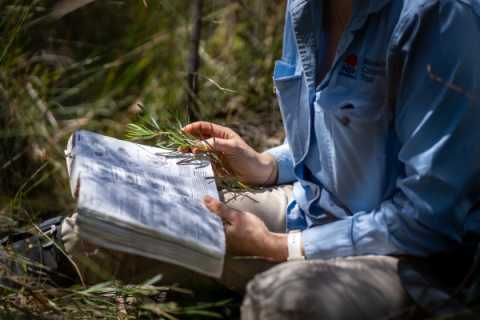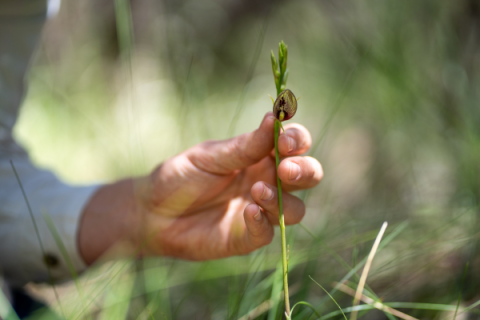For a man who found the city not to his liking, Sussex Inlet landholder Max Dingle, sees high-rise apartment living all around him.
The centuries-old bloodwoods on his 40-hectare conservation agreement site are, according to Max, “vertical apartment blocks", with several respectable residents, including glossy black cockatoos, and gliders.
It’s a ‘neighbourhood’ Max bought into more than 40 years ago after searching for a place to lose himself in and focus on his art practice.
“I was working with welded steel and grinding metal and needed a place where I could make noise and this suited me to have a welding workshop and painting studio and to be in the bush,” Max said.
Across the property, Max’s metalwork sculptures emerge from the native vegetation, sitting within the beauty of the natural landscape, a beauty that originally attracted him to the site and is now protected under an in-perpetuity conservation agreement with the NSW Biodiversity Conservation Trust.

Since entering into his conservation agreement last year, Max has expanded his knowledge of the native fauna and flora on the property through the field work conducted by NSW Biodiversity Conservation Trust officers.
“I knew there were animals here that are endangered, but I didn't realise there were possibly Pygmy Eastern possums here and that sort of gives me a thrill. There are animals here that are worth looking after,” he said.
The conservation site is particularly important to Max and the NSW Biodiversity Conservation Trust due to encroaching urban development and its lucky escape from the 2019-2020 bushfires.
NSW Biodiversity Conservation Trust ecologist James Lidsey said Max’s property was burnt in a 2001 bushfire, but escaped the Black Summer fires, which came within 500m of the conservation agreement site.
“Having a conservation agreement on here is really good due to the fact it's lucky to have avoided the fires, but also in terms of the broader landscape and residential activity,” James said, adding that even mid-last year, while reporting on the site’s biodiversity, there was evidence of animals that had sought refuge from the 2020 fires.

Orchids are one species James said he was pleased to see protected on the site.
“There are two species around here, the Cryptostylis erecta (bonnet orchid) and Cryptostylis subulata (large tongue orchid), and they’re in flower, which is good to see. They're not too common in the wider state, so it's been really nice to see those species bouncing back.
“And then there are other things that are on this site, like bloodwoods (Corymbia gummifera) and we've got yellow bellied gliders in this area which feed on these bloodwoods and pygmy possums that spend a lot of time in the banksias and feed on those.
“And then, because it's a sandy soil and so close to the coast, we have bandicoots, and a wide array of mammal species that love the dense vegetation cover.
“It's pretty amazing the diversity of animals that live in this area,” he said.
For Max, naming the species he lives among is a bonus to protecting the bush site he loves.
His conservation agreement is registered on the property’s title and with it being an in-perpetuity agreement, it remains for future owners and generations.
“I've watched trees grow from tiny saplings, and now they're teenagers, I suppose. They've still got a long way to go. But yeah, I love it. I love the place. I'm happy as I can be in terms of the protection it'll provide,” he said.
To read more stories of private land conservation and the landholders protecting habitat and species on their properties, read the summer edition of Understory magazine.